![]()
![]()
![]()
Use LEFT and RIGHT arrow keys to navigate between flashcards;
Use UP and DOWN arrow keys to flip the card;
H to show hint;
A reads text to speech;
32 Cards in this Set
- Front
- Back
- 3rd side (hint)

Menhir
|
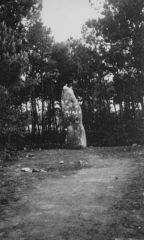
A prehistoric monument consisting of an upright megalith, usually standing alone but sometimes aligned with others in parallel rows (e.g. Carnac).
|
|
|
|
Megalith
|
A very large stone used as found or roughly dressed, esp. in ancient construction work.
|
(See Dolmen)
|
|
|
Apse
|
A semicircular or polygonal projection of a building, usually vaulted and used esp. at the sanctuary or the east end of a church to define the space for an alter.
|
|
|
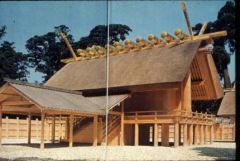
Katsuogi
|
Billets located on the roof of a Shinto building, with a higher number determining the buildings importance (e.g. Ise Shrine).
|
|
|
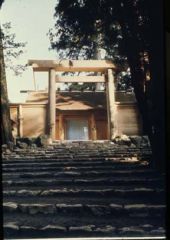
Torii
|
The gateway to a Shinto shrine, also seen as a re-inscription of the Buddhist torana. Is of trabeated construction consisting of two lintels spanning twin beams.
|
|
|
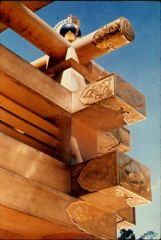
Chigi
|
The extended bargeboards that project beyond the roof to form a fork at the ends of the ridge (e.g. Ise Shrine).
|
|
|
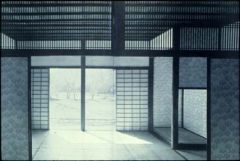
Shoji
|

A room divider or door common in Sukiya-style construction. Made of sheets of translucent washi paper in a wood frame.
|
|
|
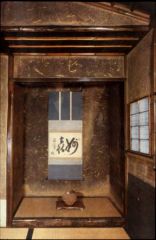
Tokonoma
|
An alcove of a room that displays a kakemono or, prized object. Most often found in a Teahouse, the guest of honor would sit with his back to it.
|
|
|
|
Tatami
|
A straw floor mat used as the modular base for Japanese architecture. A mat is about 3’x6’ or roughly the dimensions of a human frame.
|
|
|
|
Sanctuary
|
A sacred or holy place. Represents one of the basic Typologies of Architecture (Tomb, Sanctuary/Temple, House). Symbolizes the residence of “God”/ “Unknown” (e.g. Malta).
|
|
|
|
Dolmen
|
A prehistoric tomb made of large upright stones, capped with a horizontal stone, and originally buried under an earth mound.
|
|
|
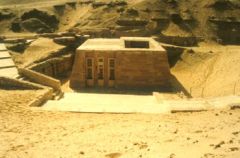
Mastaba
|
(Arabic, “bench”) An [ancient] Egyptian tomb marker made of mud brick, rectangular in plan with flat roof and battered (sloping) sides (e.g. Saqqara).
|
|
|
|
Pyramid
|
An ancient Egyptian tomb marker that is either stepped or a true pyramid, the exterior was often finished with limestone. Represents the mound that the sun god, Re, created himself from. (See architecture of mass)
|
|
|
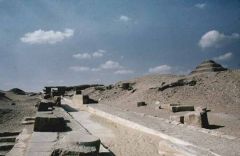
Causeway
|
A raised passageway ceremonially connecting the valley temple with an ancient Egyptian pyramid (e.g. Giza).
|
|
|
|
Temple
|
The ceremonial residing place of a deity: one of the basic Typologies of Architecture. (See Sanctuary)
|
|
|
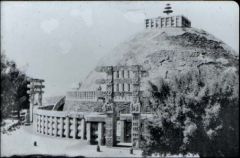
Stupa--in addition to symbolizing the holy mountain, symbolizes the cosmos. The stupa represents the universe, the square platform- the heavens, and the chattri- the gods heavens.
|
A Buddhist reliquary surrounded by an ambulatory capped by a square platform with a chattri at its center.
|
|
|
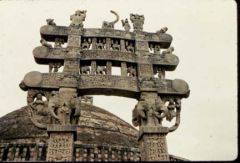
Torana
|

An elaborately carved, trabeated gateway that typically marks the entrance to a Stupa located at the four cardinal points. Imitative architecture in that they are carved so as to look like wood.
|
|
|
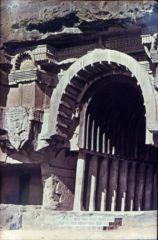
Chaitya hall
|

A rock-cut sanctuary/assembly hall/cave shrine, designed as a stupa in reverse, with it being carved from the top down and an ambulatory surrounding it. It also serves to symbolize the sacred womb (e.g. Karli). (See Subtractive architecture)
|
|
|
|
Vimana
|
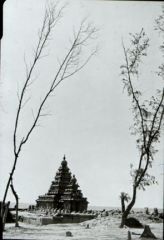
A terraced towers above the shrine to Shiva or Vishnu (e.g. Mahabalipuram).
|
|
|
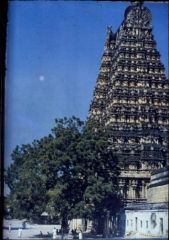
Gopuram
|
A terraced tower above a threshold to a Hindu monastery (e.g. Mahabalipuram).
|
|
|
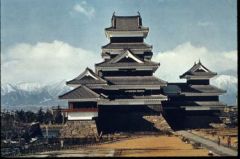
Shogun Castle
|

Consisted of a moat surrounding a battered platform of dressed granite. The township generally radiated from the castle.
|
|
|
|
Imitative architecture
|
Architecture that imitates natural construction. The Step Pyramid of King Zoser was an example of this.
|
|
|
|
Abstract architecture
|
Giza pyramids are an example of this in the sense that they weren't imitative and had smooth sides, which showed their focus on geometrical shapes.
|
|
|
|
Tectonic Construction
|
Buildings made up of individual component parts joined together with all the joints clearly expressed. (An example is Chengde Garden Pavilion)
|
|
|
|
Stereotomic Construction
|
Buildings that look like a big solid mass even though its made of individual blocks. (Egyptian pyramids are an example of this.)
|
|
|
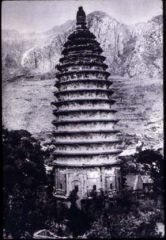
Pagoda
|
A marker for Buddhist monasteries in China and Japan, it grew from a representation of the stupa to an imitation of the classical Chinese watchtower (although not used for that purpose).
|
|
|

Talud/Tablero- The Temple of the Feathered Serpent may have marked the first use of the distinctive Teotihuacan architectural profile known as talud-tablero, in which a rectangular panel (the tablero) sitting atop a sloping panel (the talud). The surfaces were usually decorated with murals.
|
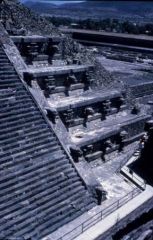
|
|
|
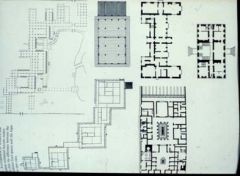
(1)Based on lashed frame: on platform, modular grid, interchangeable use of space;(Shoji)
(2)Individual pavilions for separate functions, joined by corridors. |
Two types of residential architecture
|
|
|
|
Procession
|
The journey to the structure. (Finally coming to something great at the end.)
|
|
|
|
Feng-Shui
|
"If the heavenly influences are auspicious, the geographical features are benificial, and the actions of man are in harmony with the social, cultural, and political situations, the feng-shui is ausspicious. (Literally, "wind-water." Every part is in hrmony with every other part.
|
|
|
|
Jen
|
In confucianism, the word for moral conduct.
|
|
|
|
Li
|
In confucianism, the word for a combination of etiquette and ritual traditions.
|
|

